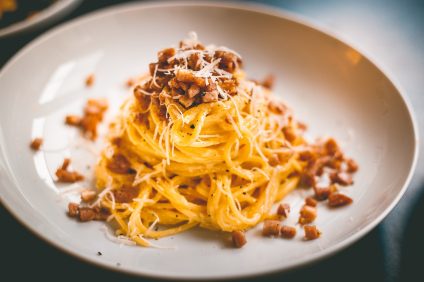Il homemade ice cream everyone likes it, young and old: a "primacy" that few foods in the world can boast. Italian product par excellence, highly imitated but without success, it has a history that comes from afar and many legends to tinge it with "mystery". How was artisan ice cream born, what properties does it have and how to recognize it? Let's find out together.
The history of ice cream
La birth of artisanal ice cream everyone contends for it a bit. There are even those who consider goat milk mixed with snow that Isaac is "ice cream" - according to what is written in Bible - offered to Abraham. Between 600 and 900, the Chinese Tang dynasty prepared a refrigerated dish based on heated and fermented milk, flour and camphor leaves. While in Sicily, in the ninth century, the Arabi they brought their "sorbet“, A preparation based on water, sugar, herbs and spices cooled by adding the salts to the ice. The birth of modern artisanal ice cream, however, seems to refer to Florence. Right here, in the fifteenth century, the architect Bernardo Buontalenti invented a preparation based on milk, cream and eggs. While the first coffee-ice cream parlor in history, the one that still exists Procope coffee, Francesco Procopio dei Coltelli from Palermo opened it in Paris. And in America, how did the gelato? The credit goes to Filippo Lenzi, who inaugurated his ice cream shop here at the end of the XNUMXth century. And it is precisely on American soil that an invention destined to change the sector was born: the hand crank sorbet. For the former ice cream on a stick finally we must return to Italy. Where, in 1948, Mottarello made its debut. Followed in the XNUMXs by the Cornetto.

How to recognize real artisan ice cream
Not all ice cream is the same. Indeed, for for recognize artisanal ice cream it takes some experience. Here are some tips to avoid being misled:
- il colore must reflect that of taste: a fluorescent green pistachio will never be an artisanal pistachio
- la sweetness it must not be excessive but not too low: an ice cream that is too sugary will also be too soft, an ice cream without sugar will be grainy
- creamy at the right point, the artisan ice cream leaves a sensation of freshness: it is good to be wary of excessive creaminess
- if it does come the headache it means that it is too cold, and therefore not artisanal
- its flavor must not last long in the mouth, but rather it must "to disappear”If you drink a glass of water
- when placed on the cone or in the cup, it should not melt too quickly but it shouldn't stick when you turn it upside down
Finally, it is good to avoid eating ice cream with ice crystals: their presence suggests bad storage.
The property
Artisan ice cream is a complete food. To say this is a research conducted by the University of Milan and its Center for Studies and Research on obesity. By examining five flavors (chocolate, cream, hazelnut, strawberry and lemon), the scholars compared it with other sweets and desserts, highlighting its nutritional properties. One hundred grams of chocolate ice cream provides 4,3 grams of protein, 8,1 of lipids, 2,3 of fiber and 23,6 g of total sugars. On the front of the Calories, ranging from 200 pounds of cream ice cream to 100 percent fruit ice cream. Just think that 100 grams of dark chocolate contain 524 calories, 100 grams of rusks 410. And that, a packaged snack, rarely has less than 300 calories. So, for a snack, artisanal ice cream is the perfect alternative!








